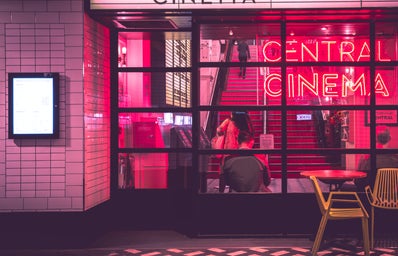Edward Scissor Hands, Charlie and the Chocolate Factory, and Corpse Bride are few of the many Tim Burton films I loved to watch growing up. But as I got older, I began to realize that nowhere in any of his films was a single minority, much rather a Black person. When asked about the diversity of his films, he replied that when a Black and Asian child were added to the Brady Bunch Show, they were getting “politically correct”. Essentially, Mr. Burton only believes that minorities should only be included in shows if they need to be. More specifically, that Black people don’t fit the aesthetic of his films and he felt no need to include them. If we’re being honest, all I heard was that Black people only “fit the aesthetic” of stereotypical roles.
And this is a common theme in Hollywood: black people struggling to find roles that don’t require them to star as maids to White women in the 1960s or as slaves in a Civil War reenactment. Even Viola Davis mentioned in an interview that the first non-stereotypical role she received was when she was cast in hit TV show How to Get Away with Murder. It seems that Mr. Burton and many other white-washed filmmakers want to live in a world where black people and other minorities don’t exist. By making movies that only star white people, he gets to live out these fantasies in which white people are the default.
When you get down to it, you have to ask yourself: is it really that impossible for a Black person to star in any of his films? None of his movies have anything to do with race and being white is not essential to the plot of the story. Do you have to be white to get lost in Wonderland? Or white to have scissors for hands? Or white to come back from the dead as a corpse bride? Or white to be a vampire? In truth, there is nothing stopping him from including Black people in his movies besides his bigoted mindset.
Henry Selick, on the other hand, had no problem including Black people in his movies. He featured Wybie, from the stop-motion animation Coraline, a Black character who’s race had nothing to do with the plot, but didn’t take away from the aesthetic of the movie. Wendell & Wild is another stop-motion animation film he collaborated with Black filmmaker Jordan Peele on. The movie not only featured African-Americans as the main characters, but also incorporated other minorities in the cast such as Asian and Hispanic characters. Incorporating minority characters into movies where they aren’t playing stereotypical roles is so important.
Representation matters.
Some may say it’s just a preference, but to say that Black people “don’t fit the aesthetic” is a sad excuse and a disguise to hide a racist perspective. Minorities, especially Black people, need to be able to see themselves playing roles in thrilling or chilling movies.
I don’t care what Mr. Burton says, black people don’t just fit the aesthetic: they are the aesthetic.
In fact, there’s an entire movie coming out where a African-American woman will be playing Ariel in the live adaptation of The Little Mermaid. However, some people aren’t too keen on seeing their childhood “ruined” by incorporating a Black woman instead of a white woman for the role of a mermaid.
But that’s a discussion for another time.

